In ancient times, people believed that birthmarks on a baby were signs of fate and predicted his future. Now scientists are considering more natural reasons for the appearance of such formations. Let's consider what factors influence the appearance of spots, and in what cases do they require removal? Why might a birthmark appear in a newborn?
Types of birthmarks
A child may have a wide variety of birthmarks on his body - smooth or covered with fluff, reddish or brown, convex or flat. The main types of birthmarks in newborns are nevi and angiomas.
What shade can nevi be?
Nevi are among the most common types of skin marks. They usually come in a variety of brownish shades, ranging from dark brown to pale. The basis of nevi are melantocytes. These epidermal cells contain melanin, a pigment that affects skin tone. It is necessary to protect the skin from ultraviolet radiation. Sometimes these cells are localized in one place, which leads to the appearance of a mole. Dark birthmarks indicate an abundance of melanin, while light ones indicate a lack of it.
A Mongolian spot in a newborn should also not be a cause for concern for parents. It is also a place of concentration of melanin and is a spot, or several spots of different sizes from 1 to 10 cm in diameter, blue, green or even black. The most common location is the baby’s lower back, mainly the tailbone or butt. Mongolian spots are safe, they do not cause any discomfort to the child and go away on their own before adolescence. This type of nevus is named so because of their frequent detection in Mongolian children (90%), Mongolian spots are also often found in Asians, representatives of the Mongoloid and Negroid races.
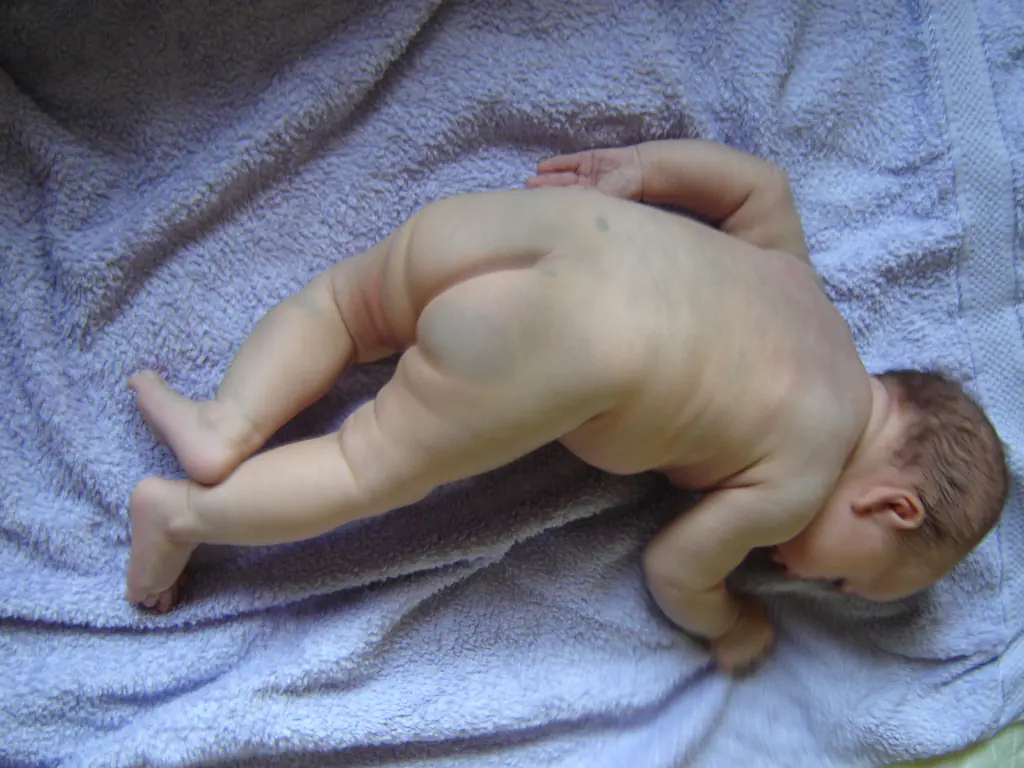
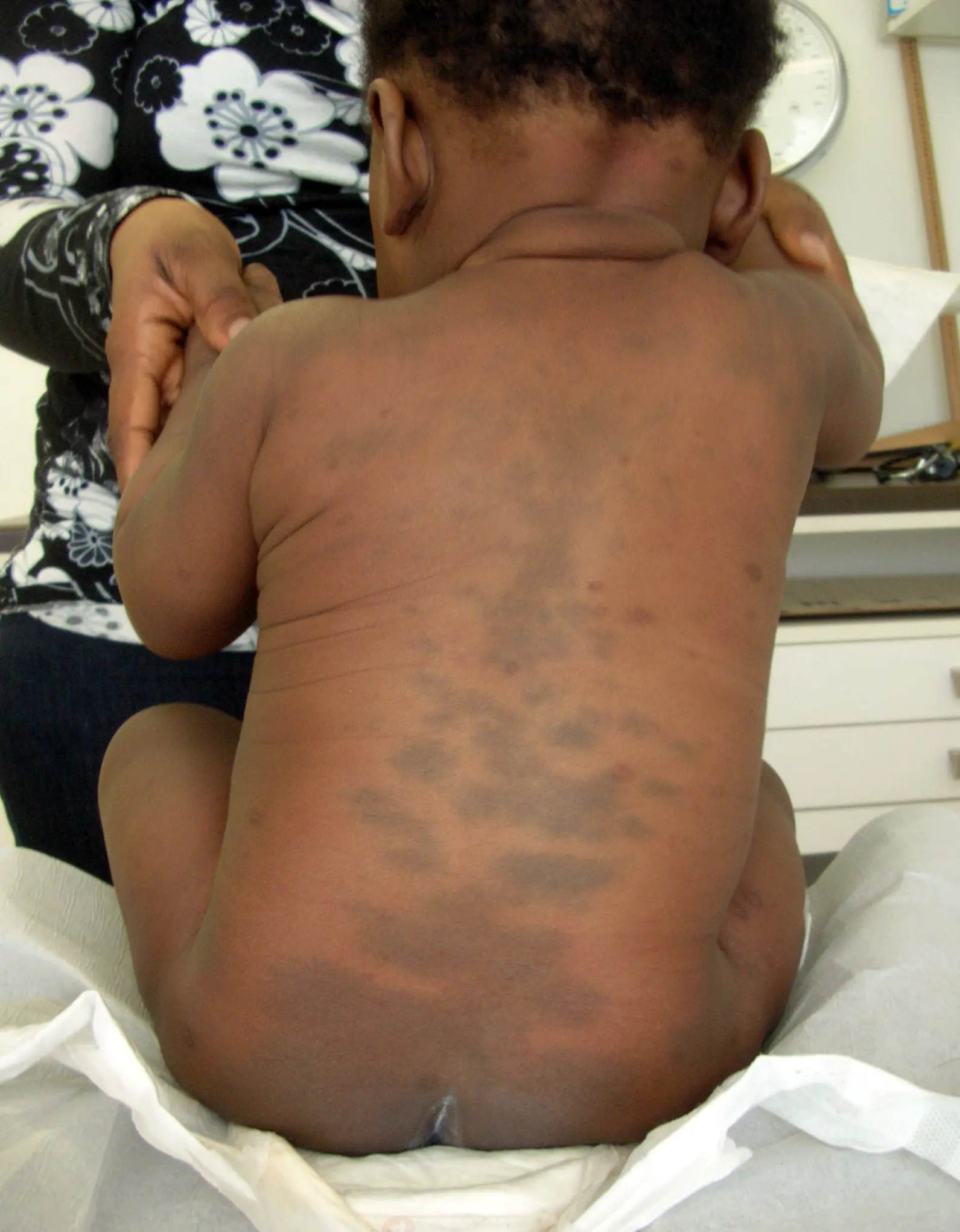
There are also white formations. These include anemic nevi that arise due to underdeveloped blood vessels.
They need to be distinguished from millet grasses - milia. The latter look like convex dots filled with whitish content. They are a type of skin rash. Anemic nevi are a congenital phenomenon, and they are easy to identify: you need to rub the spot. The surrounding skin will turn red, but the formation will remain white.
Light brown Jadassohn nevi indicate a congenital defect of the sebaceous glands. They are usually found on the baby's head, under the hairs. This occurs in 3 out of 1000 babies. It is recommended to remove it before adolescence, since in 10-15% of cases, they can subsequently develop into a cancerous tumor.
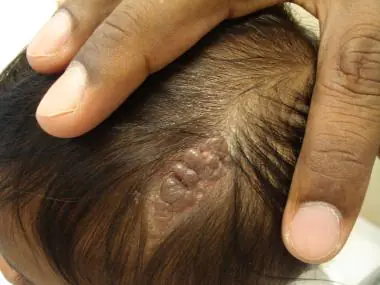

What if it’s a matter of blood vessels?
Another type of birthmarks is angiomas. They are of vascular nature. Congenital formations of small vessels on the skin are called hemangiomas. If such accumulations form in the lymphatic system, then they are classified as lymphangiomas. Even congenital, they appear externally only by the age of three.
In a newborn, only vascular hemangiomas can be detected. They are distinguished by a whole range of shades of red. Such formations are divided into several subtypes:
Strawberry (strawberry) hemangioma
These formations are convex, similar to red “berries”. They appear immediately after birth, usually on the face. The sizes can be different - from a millimeter to several in width. Strawberry hemangioma can increase in size, which is why it is dangerous, as it can affect the healthy tissues of the child.
Often this type of hemangioma stops growing, gradually brightens, shrinks and disappears completely by the age of 10.

Stellate (spider) angioma
It looks like a star with a bright base and “rays” extending from it. Most often it occurs on the child's neck. Disappears on its own in the first years of life.
Cavernous hemangioma
Loose, purple hemangioma, deeply embedded in the skin. It feels warmer to the touch than the surrounding epidermis. If you press, the baby will cry due to unpleasant sensations. This type of neoplasm requires treatment.
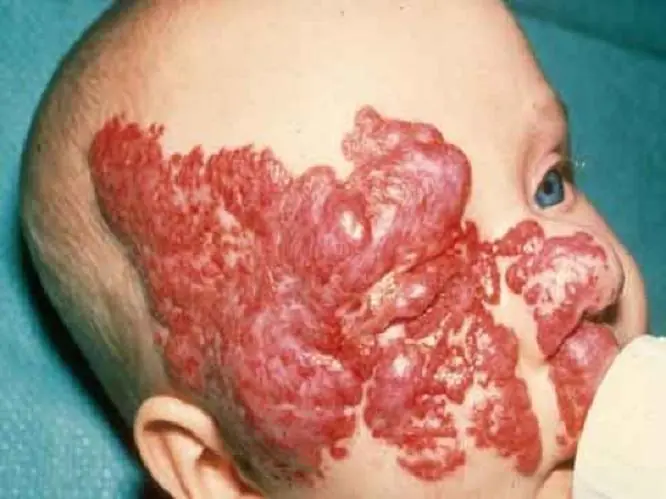
Flaming (fiery) nevus
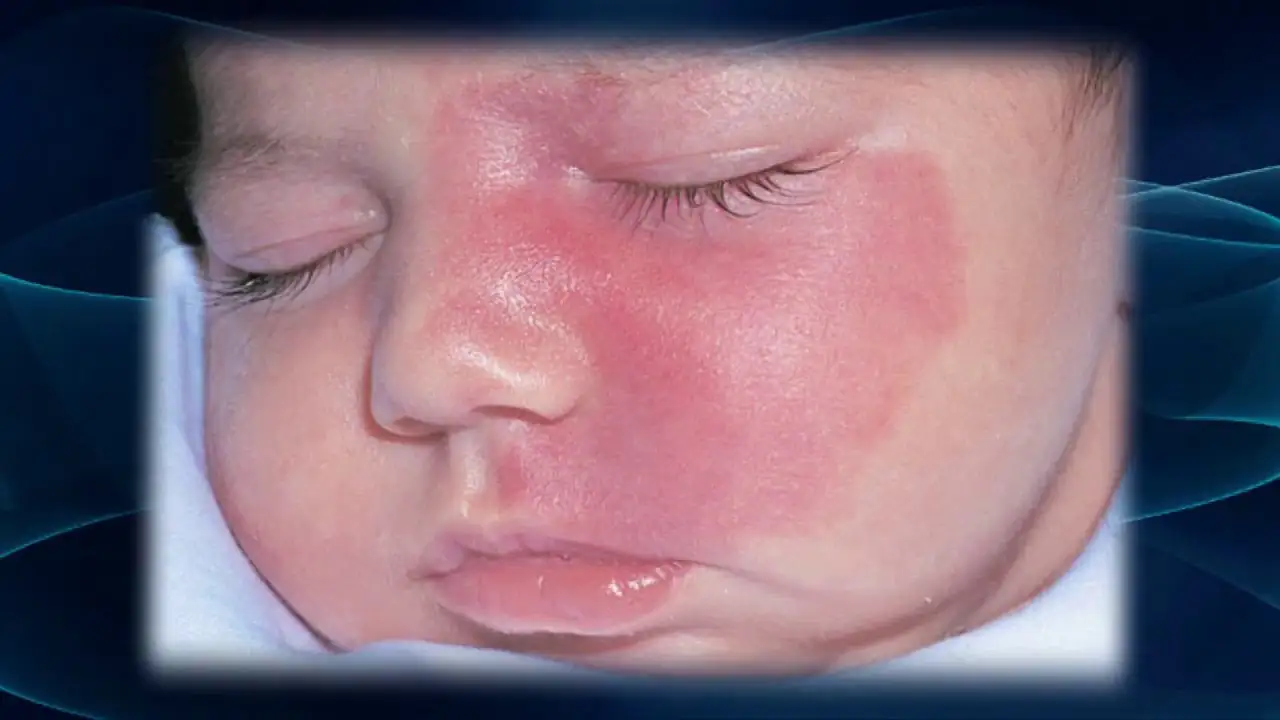
Looks like a red or purple stain from spilled wine. It can appear anywhere on the baby’s body. Such formations do not go away on their own. If they are not removed, they will remain for life. If the “wine stain” is in a visible place or continues to grow, it is better to take the trouble to correct the defect.
“Stork marks” (capillary hemangioma)
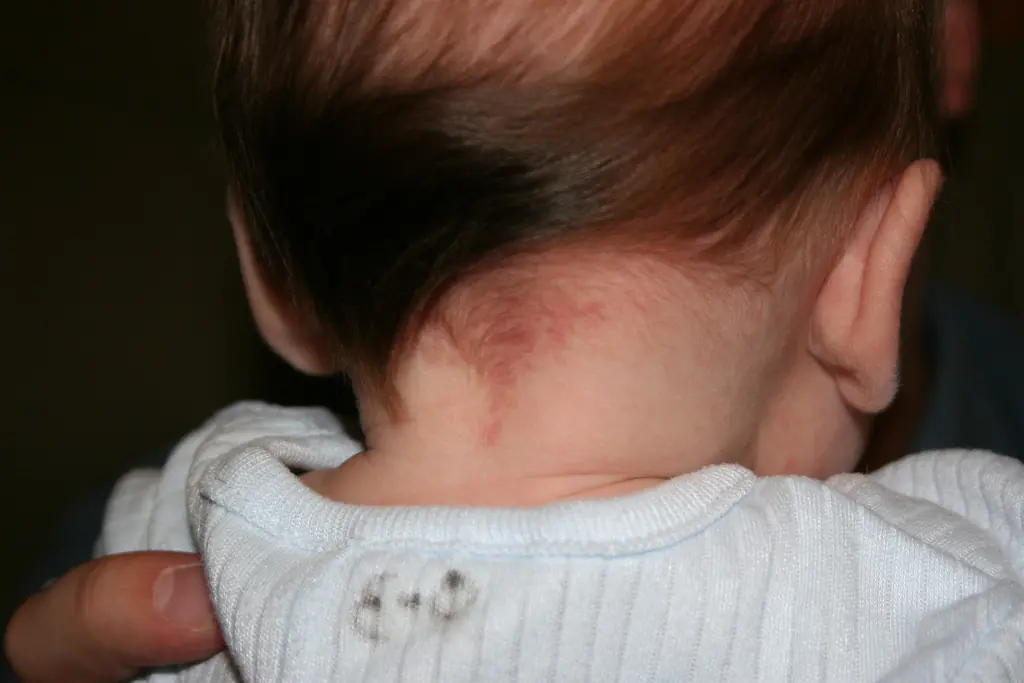
Such marks are also called “stork bites.” And if there is a mark on the baby’s forehead - “an angel’s kiss.” The formation is usually pink or red, but can also be orange, and resembles the mark of a bird's beak, which is how it gets its name. The formation is flat and does not rise above the skin. It is often found on the back of the baby’s head, in the neck area. When stressed, for example, when a baby cries, it acquires a brighter color. By the age of two, “stork marks” in most cases go away on their own.
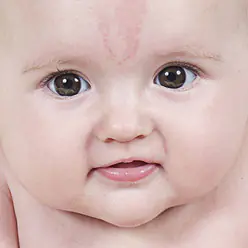
In addition to the above, there are other types of birthmarks. But they are much less common.
If you notice that a child’s hemangioma is increasing in size, immediately contact a specialist (surgeon). He will be able to assess the danger of the condition and prescribe appropriate treatment or removal of the tumor.
Causes of skin formations

The reasons for a birthmark in a newborn, of course, are not that his mother loved to pet dogs and cats, as the ancients believed. However, scientists cannot say exactly why such marks may appear. Only risk factors for their occurrence have been identified.
Why do birthmarks appear in newborns? This is affected by:
- Hereditary factor;
- Hormonal surges in the expectant mother;
- Exposure to toxic substances on the body of a pregnant woman;
- Bad ecology;
- Climate change;
- Infections of the genitourinary system.
But it happens that a birthmark appears in a newborn even without exposure to risk factors.
Birthmark on a baby: what to do?
Is your baby's birthmark small, smooth, does not grow and does not cause concern to the baby? Everything is fine, nothing to worry about. But you need to take the new growth seriously. Observe the nevus and notice whether the mark grows or hurts. If changes occur, you should visit a pediatrician or pediatric dermatologist.
If a newborn has a birthmark on his body, several rules should be followed:
- Keep this area away from direct sunlight.
- Make sure that the baby does not scratch the area with the mark.
- Try to ensure that the nevus is never exposed to caustic substances, such as household chemicals.
In rare cases, marks on the skin can be fatal. Where can it appear? Under the influence of negative factors, a simple mole degenerates into a malignant formation - melanoma. Therefore, if the spot increases in size, you should urgently contact a specialist. If the formation is removed in time, there will be no health consequences.
Should moles be removed from babies?
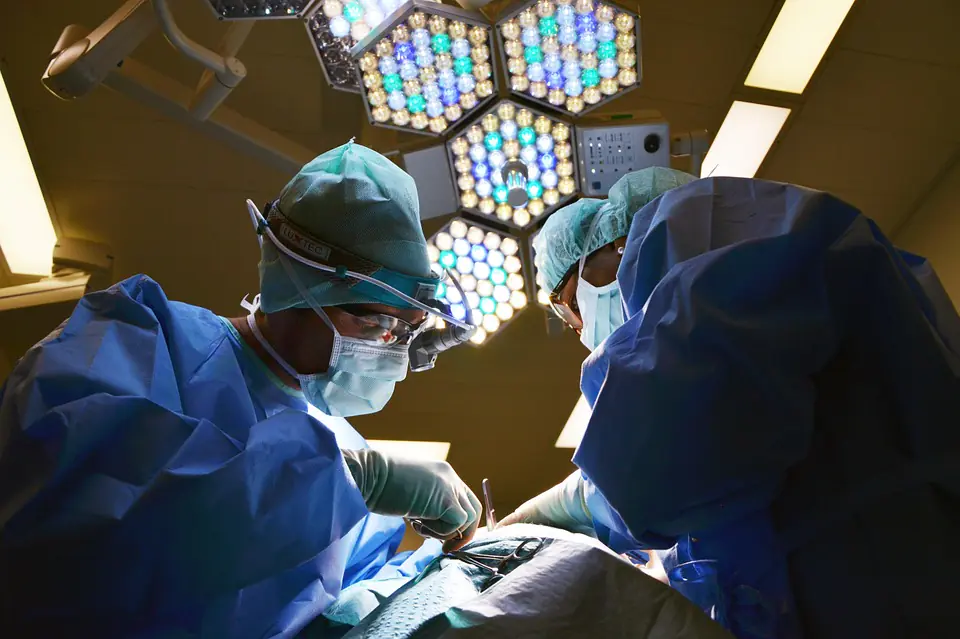
It is recommended to eliminate formations in infants only if there is a danger to life. In babies, the immune system is not yet very developed, and any intervention can lead to serious consequences.
In what cases do doctors recommend surgery at an early age:
- The birthmark is very large;
- The formation rapidly increases in size;
- There are more than five marks, and they are concentrated in one place;
- The mole is located in a traumatic place (under the armpits, on the belt, on the skin of the eyelid, in the anus);
- Nevus interferes with the normal functioning of organs (on the hand, in the nose, in the eyes).
Particular importance should be given to those cases if a mole transforms - changes color or shape, grows, hairs fall out of it, it begins to bleed or itch.
How to get rid of formations?

The doctor may recommend one of the methods for removing nevi, depending on the size and condition of the formation, as well as the health of the baby:
Use of pharmaceuticals
Special medications are injected into the mole tissue to promote the death of overgrown cells. No anesthesia is required, but is not suitable in case of allergy to the active substances of the drug.
Using a laser
Excision of pathological tissues with a laser beam. It is quick and painless, but the procedure is not always possible for hard-to-reach areas.
Cryotherapy
Exposure of the mole to low temperatures. Suitable for eliminating small nevi.
Surgery
Removal of the formation using surgical instruments. It is used in cases where other methods cannot be used.
Carrying out the intervention under the supervision of a doctor, with preliminary examination of the tissues of the birthmark, reduces the likelihood of complications to zero. After removal of large formations, scars may remain. If they are located in a visible place, when the baby grows up, you can remove the scar using cosmetic procedures.
If you believe in fate, try telling your baby's destiny using moles. But pay attention only to happy signs:
- A mark on the baby’s cheek means love;
- A spot under the hair means high intelligence;
- Moles on the hands - to talents and good luck;
- Nevi on the back - to a life without worries;
- Mark on the leg - to hard work, calmness, confidence;
- A “sign” on the butt means success with the opposite sex.
As you can see, a mole is not a reason to panic at all. With the right approach, it will not be the cause of illness, but a happy sign that emphasizes the individuality of your son or daughter.
Remember that only a doctor can make a correct diagnosis; do not self-medicate without consultation and diagnosis by a qualified doctor.
Hemangiomas, birthmarks and age spots, diaper rash and prickly heat: what to do?
The skin of a newborn and a child in the first months of life reacts very vividly to everything - the nutrition of a nursing mother, the quality of the diaper, and even the air in the room. What spots and rashes on your baby's skin are normal, and what indicates poor care or ill health? With the help of our review, a young mother can easily figure out what's what.

Skin spots
What to do if you notice an unknown spot on your baby’s skin? Be sure to contact your pediatrician: he will determine which category it belongs to and whether the child will need treatment. The spots that you may find on your baby's skin usually belong to one of the following groups.
Dark spots café au lait, round or irregular in shape. Usually they are not very noticeable, although sometimes they are the size of a five-ruble coin. Most likely, they will stay with the baby for life. If you notice more than five of these spots, consult a doctor.
Dark birthmarks spots - of various shapes, sometimes covered with hairs - can appear on any part of the body. They also last a lifetime and are usually no hassle. You should consult your doctor if they begin to change shape or grow.
Red birthmarks sometimes occur in newborns on the forehead, wings of the nose, eyelids, lips or on the back of the head. Their cause is the expansion of small blood vessels at the time of birth of the baby. If such formations are located symmetrically, for example on both eyelids or the wings of the nose, they will most likely disappear within a year. And spots that appear one by one can remain for life.
Mongoloid spot - a blue-purple mark on the lower back or bottom - usually found in children with dark skin. It does not require treatment and disappears by 12–15 years.
Hemangiomas - red spots, slightly protruding above the surface of the skin, which are formed from small blood vessels located close to each other. Hemangiomas are often mistaken for an ordinary birthmark (in medicine these are called capillary dysplasias), but the difference between them is that the spots do not grow. But a hemangioma can greatly increase in the first months of a baby’s life, slightly slowing down its growth by 5-6 months of age.
Hemangioma: diagnosis and treatment
Hemangiomas can occur on the body of babies in any place and even go deep into the skin. They come in a variety of sizes and shapes: round and elongated, like stars or spiders. Hemangiomas are treated much more often than other spots on the skin.
Hemangiomas can be flat or convex. Convex - soft red formations - form in the last weeks of pregnancy or immediately after the birth of the baby: a red dot appears on the skin, which quickly increases in size. The child does not experience any unpleasant sensations from the growing spots; some tumors disappear on their own by 2–3 years. But if the hemangioma is located in an awkward place, such as under a diaper, irritation may occur due to friction. As for flat formations, there are almost no problems with them; they do not grow, and therefore there is no need to treat them.
Most often, hemangiomas are harmless: the spot does not hurt, does not itch, and even if it appears on the eyelids, lips or tongue (and this also happens), it does not affect the functioning of the organ. But it happens that hemangiomas become inflamed and become infected. And the fact that the unpleasant spot is gradually increasing in size is a strong argument for parents to quickly begin treating the baby. After all, even doctors cannot predict how quickly and how much a hemangioma will grow.
There are two ways to get rid of a hemangioma: either remove it surgically (with a laser), or act on its cells so that they die on their own. The first method is used in difficult cases, for example, when the spot grows quickly or goes deep into the skin. In other situations, doctors will most likely try to freeze the hemangioma - this method is called cryotherapy and is now considered the most effective.
The treatment procedure lasts no more than a minute: using a special apparatus, a small disk cooled with liquid nitrogen is applied to the stain. Under the influence of cold (and the temperature of liquid nitrogen is minus 196 °C!) hemangioma tissue is destroyed in just 7–10 seconds if the spot is on the mucous membranes, and in 20–25 seconds if it is located on the skin.
After a few hours, a flat bubble appears at the site of the hemangioma, which is replaced by a dry crust on the 5th–7th day. It disappears on the 25-30th day, leaving a pink scar, which after 3-4 months becomes almost indistinguishable from healthy skin. Using this method, it is possible to get rid of a small hemangioma in just one session, and a large one - in several procedures.

Skin problems and their solutions
Redness on the cheeks or a rash on the bottom occurs at least occasionally in any baby. We will tell you what skin problems bother babies most often and how to help your baby.
Diaper rash. This is redness of the skin on the butt, around the anus, in the groin and between the buttocks. It occurs due to moisture and friction if the mother changes the diaper too rarely (the temperature in an overfilled diaper can reach +40 °C!).
You need to change the diaper every 3-4 hours, and after washing the baby, leave him naked for 10 minutes so that the skin can breathe. You can apply baby cream or powder to the reddened areas (you cannot combine both products!). If the damaged area begins to get wet, rinse it with a decoction of chamomile or bay leaf and lubricate it with a drying cream with zinc oxide.
Diaper (contact) dermatitis. The problem is more common among girls than boys; artificial babies, allergy sufferers. The appearance of pimples with a whitish liquid on the baby’s butt, genitals and thighs (and before that, redness, swelling and peeling are possible) may mean that the diaper or detergent used to wash the onesies is not suitable for him. Wash your butt several times a day with running water, wipe it dry and lubricate it with a drying cream. Do not use wet cleaning wipes or, in extreme cases, diapers.
Prickly heat. If the apartment is hot and the baby sweats a lot, then a small red rash appears on his shoulders, back, and in the folds of the skin (on the butt and groin). Heat rash indicates that the baby is overheating, and since the work of the sweat glands is not yet established until the age of 2, sweat accumulates and clogs the ducts of the glands. Open the baby often, rinse it with warm water, and dress it in cotton clothes. A cream with zinc oxide will help soothe the skin.
Fungal infection. Harmful microorganisms and fungi can get into the damaged areas - then round reddish spots with fringed edges, pustules or ulcers will appear on the baby’s skin. The doctor will prescribe a comprehensive treatment for the baby: ointment, antifungal drug, vitamins, and means to strengthen the immune system.
Hives. A scattering of reddish blisters on the skin itches and bothers the baby. Most often, allergic reactions manifest themselves this way: to foods, medications, or synthetic clothing that are previously unfamiliar to the baby. Lubricate the skin with antiallergic ointment, and if the baby is very worried, you can give him an antiallergic drug, which the doctor will recommend.
Allergic diathesis. This is not a real allergy, but only a predisposition to it. Diathesis often begins in the 3rd month in overweight children. Crimson cheeks, a red scaly rash behind the ears, on the neck, and legs are its characteristic signs. In this case, if the mother is breastfeeding, she will have to exclude whole cow's milk, eggs, fish, honey, and citrus fruits.
Various marks on the skin of newborn babies are not uncommon. Doctors claim that almost every second baby is born with red spots on the skin.
Spots in newborns

Vascular spots on the skin of infants cause concern among parents, because doctors are not always able to clearly explain the features of such marks. And vascular spots in newborns on the face or open areas of the body, as well as formations of especially large sizes and rich colors, become a cause of serious anxiety.
In fact, a vascular spot on the skin of a newborn does not always require anxiety and panic. Sometimes such a phenomenon is considered completely natural and transitory. So, doctors distinguish several types of such marks:
- Reddish bundles of choroid plexuses that are visible through thin skin. Such meshes are especially often visible on the head, namely on the eyelid, in the middle part of the forehead, and also on the back of the neck. Such spots are considered completely safe; they disappear without a trace or become noticeably pale when the baby grows a little, and his skin naturally becomes thicker.
Only a qualified doctor can accurately determine the cause of the appearance of red spots on the skin of a baby. Additional research techniques may be necessary.
Telangiectasia
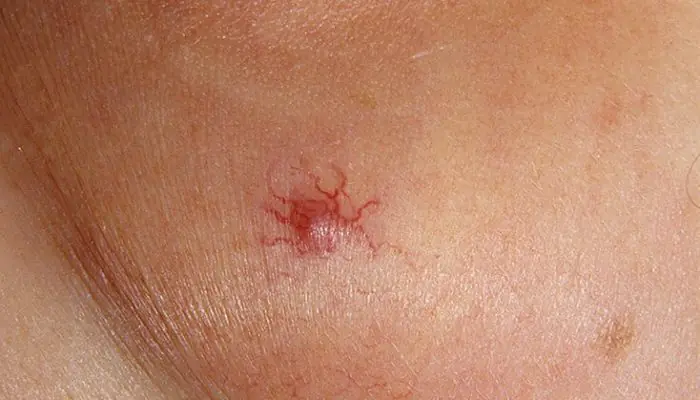
The occurrence of such formations is explained by the prolonged presence of the fetus in the mother's womb in a forced position (embryonic position). Shortly before birth, the baby is pressed tightly against the mother's muscular wall and the bones of her pelvis, and local ischemia (inadequate blood supply to tissues) may develop in areas of maximum pressure. As a result of this, the baby is born with red spots on the skin - areas of expansion of superficial vessels:
As a rule, as the baby grows, telangiectasias begin to gradually fade, becoming more noticeable during periods of great anxiety and tension. Most often, they disappear without a trace by the age of five years of a child’s life. However, there is a risk that such marks will remain with the baby for life.
Doctors usually do not provide targeted treatment for telangiectasia. The areas of dilated vessels are completely safe for the child, cannot increase in size and gradually fade.
It is important to consider that red spots on the back of the baby’s head, as well as on other parts of the body, even with all their similarity to “stork bites,” can be caused by other factors, for example:
- Birth trauma.
- Various skin diseases.
- Allergic reactions.
- Heat rash, etc.
Only an experienced specialist can accurately determine the cause of the appearance of red spots.
Hemangiomas
Hemangiomas of various types occur in almost every tenth child. Such tumors are a type of birthmark and are abnormally multiplied endothelial cells from various types of vessels. To date, the exact cause of their occurrence is not yet known to doctors, but experts suggest that hemangiomas arise due to disturbances in intrauterine development at the stage of formation of the fetal circulatory system.
Fortunately, such a birthmark most often resolves on its own before the age of seven (maximum ten years), but in some situations there is a need for targeted therapy.
Hemangiomas can be localized in different parts of the body, but in the vast majority of cases they are found on the head, namely on the face, eyelids, neck or forehead. Their color and shape may differ and are determined by the initial structural features of the vascular wall. A birthmark may not be larger than the size of a pinhead, or it may reach up to one hundred square centimeters. There are light pink neoplasms, dark red, deep scarlet, burgundy, etc. Removal of hemangioma is carried out:
- With rapid growth or large size.
- High risk of malignancy.
- When localized near the eyes or ears.
If you find a birthmark on your child’s skin, you should definitely consult a doctor. The specialist will determine the type of formation and, based on the data obtained, will be able to make a decision on further therapy.
Angiodysplasia
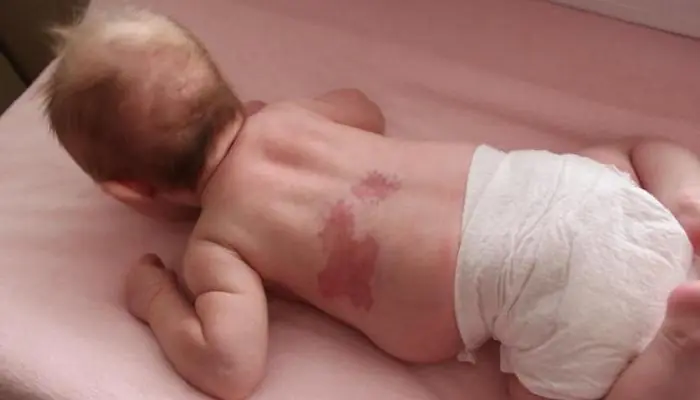
This is a fairly rare and serious disease, which is characterized by an abnormal increase in subcutaneous vessels, accompanied by circulatory disorders. Manifestations of congenital angiodysplasia are most often noticeable:
- On the face.
- On the lower extremities.
- On hands.
With this pathology, the affected areas become covered with many red spots and bruises. At the same time, the skin above them may heat up. A newborn baby is characterized by increased capriciousness and constantly cries.
Correction of angiodysplasia in newborns is quite a difficult task. This disease has not yet been fully studied.



